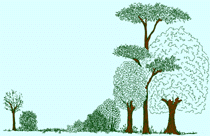 |
Enspirited visioning, future searches and guided visualisation |
|||||||||||||
|
Enspirited visioning |
ENSPIRITED ENVISIONING - (formerly called ‘Futures-Invention’) is where people listen to the voice of their spirit and share their vision with others to discover which parts fit together and support each other. It includes three main practices or disciplines, which can be used by individuals, in pairs and in larger groups. · Deep Imaging - eliciting images of the future; · Deep Listening - listening to yourself or to other people with silence, attention and empathy and without judgement; · Deep Questioning - listening for whatever questions inside oneself insist on being asked, and asking them. A full event involves 20-24 hours’ work. The main stages are: 1. Clarify the main concern of the vision With deep imaging, for example, this means learning: · to make your images concrete; · not to censor them or try to interpret them; · to live the image as fully as possible. 2. Create individual visions of the future People take a leap into the future to see what it will be like when their concern is fully addressed. They identify a compelling future vision, with indicators (specific signs, behaviour etc) to show that the vision has happened, positive or negative consequences of the vision and maybe stories and values. Visions are drawn or written on flipcharts for display. 3. Seek shared vision People with similar visions create a shared vision that identifies common ground. This contains a vision statement, long-term goal and set of assumptions as well as the indicators, consequences and stories above. 4. Strategy paths leading to action Teams put themselves into the future and remember how it came about. They compile ‘futures histories’ of the years between the present and the year in which their future is set, in say five year blocks. They then look at the futures histories to seek opportunities for action. FUTURE SEARCH - generates action by building a shared vision among a diverse group of people. A Future Search conference is a way for a community or organisation to create a shared vision for its future. It enrols a large group of stakeholders, selected because they have power or information on the topic at hand or are affected by the outcomes. Ideally there are 64 people, who form eight tables of eight stakeholder groups. Examples of such groups are health, young people or shopkeepers. They take part in a highly structured two and a half-day process covering five stages:
Several features are designed to empower participants: · The principle that people are the experts in their own lives. There are facilitators, but no other experts; · The emphasis on self-management in small group work; · The openness - everything is written up on flipcharts and displayed. A future search is worth considering when there are influential people within the sponsoring body (e.g. a local authority) who are prepared to support the idea strongly; and there is (or there can be) a steering group of local people representing all parts of the community. GUIDED VISUALISATION - is the use of a script to take a group on an imaginary journey into the future. It has several advantages. It can: · be adapted and used with a variety of groups; · be used with different sized groups; · be easily recorded; · fit into a limited time slot of an evening/half a day; · access people’s deepest hopes and dreams, which are not often shared with others; · be used with large numbers, with enough facilitators and rooms; · be done without using too many resources; · be not too demanding of venues, although it is especially important to avoid interruptions during the visualisation; · fit into a longer term programme to inspire action. The following steps are based on the approach of Gloucestershire’s Vision 21, which uses guided visualisation in a long term process. 1. Setting the scene The facilitator sets participants at ease by outlining what is going to happen, and works with the group to agree group guidelines. These are: confidentiality; the need to be non-judgmental; and encouragement to people to listen to each other. Some time is spent on getting to know each other and discussing the current situation. 2. Where we are now A brief mapping exercise on current concerns and trends is conducted. 3. The guided visualisation The facilitator helps the group to relax and get comfortable, then reads a script that involves travelling forward into a year in the future. The facilitator then slowly talks the group through ‘a day in your life’, starting with waking up and finishing with going to bed. The day is kept as open to individual interpretation as possible, with the facilitators careful not to bring in their personal values or assumptions. The facilitator reads slowly through the visualisation script, allowing enough time for people to build up their pictures of the future: this takes approximately 15 minutes. The facilitator then slowly brings participants back into the present time and checks that everyone has arrived back. Steps are taken to protect participants during the process, and help them prepare for effects afterwards, in case any are affected by the visualisation: e.g. by accessing usually hidden parts of their imaginations or only being able to see negative aspects of the future. They emphasise that it is positive visions that are being sought. 4. Describing and recording Participants take time on their own to record their imagined visions. They then share their images of the future with first another person and then a small group, recording essential elements on post-it notes.These are displayed to help create a collective vision among the whole group. 5. Taking action The facilitator helps participants to take the first steps towards realising their visions by becoming involved with a project. Mark Fisher - Permaculture Design course handout notes www.self-willed-land.org.uk mark.fisher@self-willed-land.org.uk |